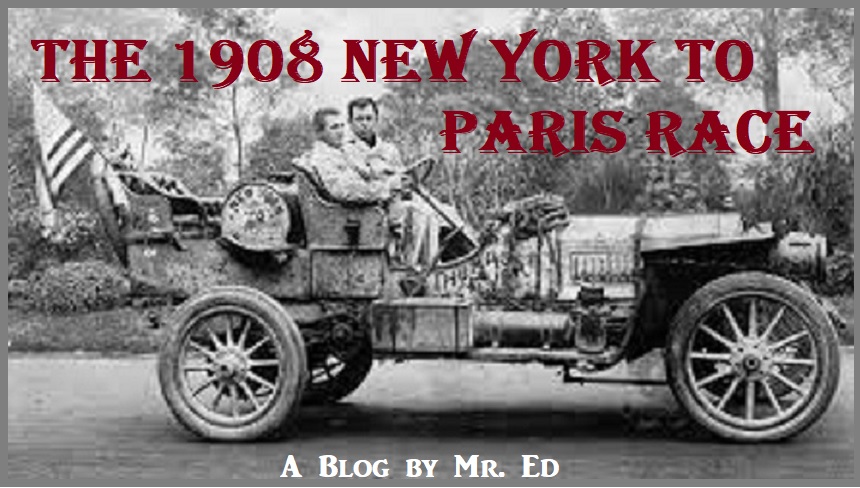
The 1907 Thomas Flyer. The car that won the 1908 race from New York to Paris.
Greetings ~
In 1908 the horse and buggy was still the main means of transportation and hauling freight in the world. Buggies and wagons were the big market vehicles. But the motorcar, or automabile was on the rise. There were a handful of small manufacturing companies making automobiles. Like today's electric car industry, in the first decade of the 1900s, the motorized car, or horseless carriage was a new concept and was, in most cases, a rich man's toy.
In the United States, and much of the world for that matter, only a few hundred miles of roadway was actually paved, mostly with bricks. Most roads and streets were dirt or gravel and that turned into mud on rainy and wintery days. Much of the roads were actually non-passible during foul weather.
The first car to gain any real fame was the 1902 Oldsmobile. But other cars were coming around quickly. The E.R. Thomas Motor Company in Buffalo, New York was one of them. Thomas built family cars and luxury cars. In 1908 it's car would be put to the test. A race was planned. A race from New York to Paris. This was a time when it was hard enough to get from New York City to Trenton, New Jersey. Several cars from around the world would take part in the race. But it would be the Buffalo, New York's 1907 Thomas Flyer that would win the race.
Today, the 1907 Thomas flyer is displayed in a museum in Reno, Navada like many historical vehicles. It's hayday lasted a mear 170 days. But it's been remembered for the last 100 years plus as a revolutionary automobile. This blog is about the 1908 Great Race from New York to Paris.
